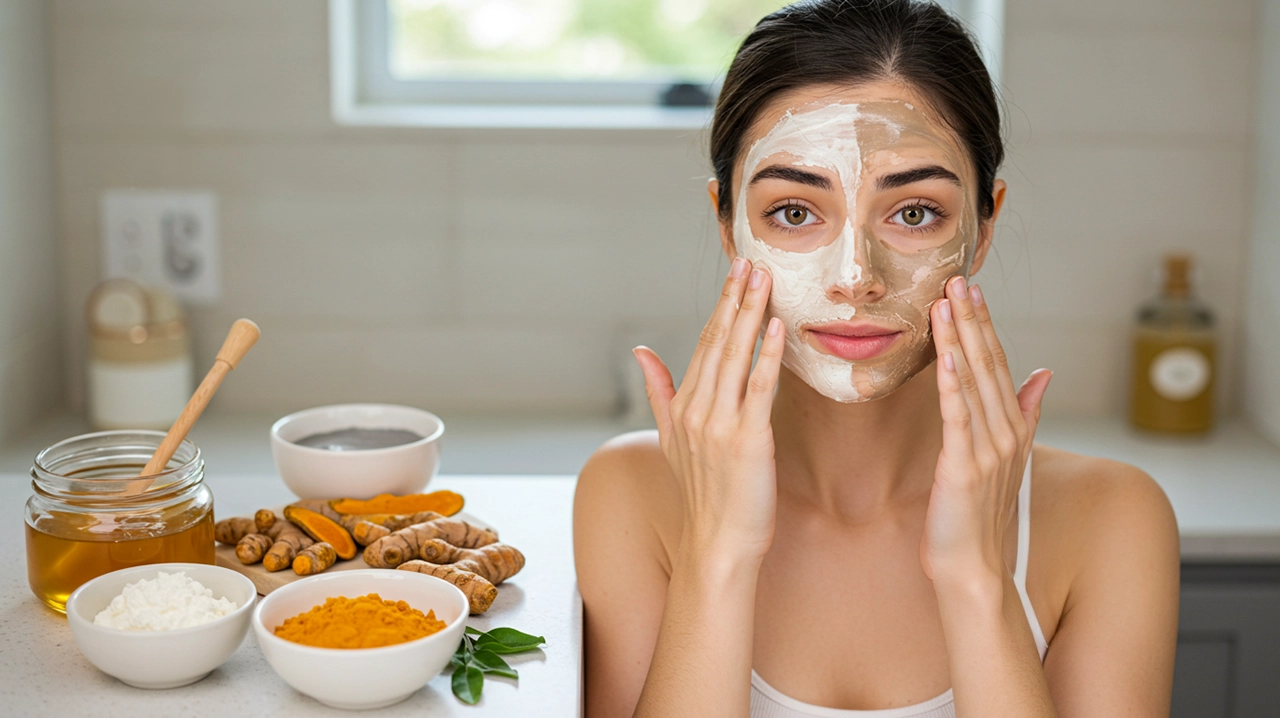

Hyperpigmentation cream for sun damage repair
Have you ever looked in the mirror and noticed dark spots or uneven skin tone that weren’t there before? 🤔 You’re not alone. Sun damage and hyperpigmentation affect millions of people worldwide, leaving them feeling self-conscious and searching for solutions. But here’s the good news: you don’t have to live with these skin concerns forever.
Enter hyperpigmentation creams – your secret weapon against stubborn sun damage. 🛡️☀️ These powerful products are specifically formulated to target and reduce dark spots, leaving you with a more even, radiant complexion. But with so many options on the market, how do you know which cream is right for you? And more importantly, how can you ensure you’re using it correctly for maximum results?
In this blog post, we’ll dive deep into the world of hyperpigmentation creams for sun damage repair. You’ll learn everything from understanding the science behind hyperpigmentation to choosing the perfect product for your skin type. We’ll explore key ingredients that pack a punch against dark spots, share expert application tips, and even reveal complementary treatments to supercharge your results. Get ready to say goodbye to sun damage and hello to the glowing, even-toned skin you’ve always wanted!
A. What causes hyperpigmentation
Hyperpigmentation occurs when your skin produces excess melanin, the pigment responsible for skin color. Several factors can trigger this overproduction:
Sun exposure
Hormonal changes
Inflammation or injury
Certain medications
Genetic predisposition
| Cause | Description |
|---|---|
| Sun exposure | UV rays stimulate melanin production |
| Hormonal changes | Pregnancy, birth control pills can trigger melasma |
| Inflammation | Post-inflammatory hyperpigmentation from acne or injuries |
| Medications | Some drugs can increase skin sensitivity to sunlight |
| Genetics | Some people are more prone to hyperpigmentation |
B. How sun exposure contributes to skin discoloration
Sun exposure is the primary culprit behind most hyperpigmentation cases. When your skin is exposed to UV rays, it responds by producing more melanin as a protective measure. This process can lead to:
Sunspots or age spots
Freckles
Uneven skin tone
Prolonged and unprotected sun exposure can exacerbate existing hyperpigmentation and create new areas of discoloration.
C. Common signs of sun-induced hyperpigmentation
You can identify sun-induced hyperpigmentation by looking for these common signs:
Dark patches on sun-exposed areas (face, hands, arms)
Uneven skin tone
Freckles that darken or multiply
Age spots or liver spots
Rough, scaly patches (actinic keratosis)
Remember, while some level of pigmentation is natural, excessive discoloration can be a sign of sun damage. Now that you understand the causes and signs of hyperpigmentation, let’s explore the key ingredients that make hyperpigmentation creams effective in treating these concerns.
Hydroquinone: The gold standard for skin lightening
Hydroquinone is widely regarded as the most effective ingredient for treating hyperpigmentation. This powerful compound works by inhibiting tyrosinase, the enzyme responsible for melanin production. Here’s why it’s considered the gold standard:
Rapid results: Often shows visible improvement within 4-6 weeks
Versatility: Treats various types of hyperpigmentation, including sun spots and melasma
Prescription strength: Available in higher concentrations for stubborn cases
However, it’s important to use hydroquinone under medical supervision due to potential side effects.
Kojic acid: A natural alternative for fading dark spots
If you’re looking for a gentler option, kojic acid might be your go-to ingredient. Derived from fungi, this natural skin lightener offers several benefits:
Mild and well-tolerated by most skin types
Antioxidant properties that protect against further damage
Gradual but consistent results over time
| Hydroquinone | Kojic Acid |
|---|---|
| Synthetic | Natural |
| Faster results | Gentler approach |
| Potential side effects | Generally well-tolerated |
Vitamin C: Brightening and antioxidant properties
Vitamin C is a powerhouse ingredient for addressing sun damage and hyperpigmentation. Its dual action makes it an excellent choice for your skincare routine:
Inhibits melanin production
Protects against free radical damage
Boosts collagen production for overall skin health
Retinoids: Promoting cell turnover and evening skin tone
Retinoids, derived from Vitamin A, are essential for comprehensive hyperpigmentation treatment. They work by:
Accelerating skin cell turnover
Reducing melanin transfer to surface skin cells
Improving overall skin texture and tone
Niacinamide: Reducing inflammation and improving skin barrier
Niacinamide, or Vitamin B3, is a versatile ingredient that complements other hyperpigmentation treatments. Its benefits include:
Inhibiting melanin transfer
Reducing inflammation associated with sun damage
Strengthening the skin barrier for better overall health
By combining these key ingredients, you can create a powerful defense against hyperpigmentation and sun damage. Remember to introduce new products gradually and always use sun protection to maintain results.

Identifying your skin type and concerns
Before selecting a hyperpigmentation cream, it’s crucial to understand your skin type and specific concerns. Different formulations work better for various skin types:
| Skin Type | Recommended Formulation |
|---|---|
| Oily | Lightweight, gel-based |
| Dry | Rich, creamy textures |
| Sensitive | Gentle, fragrance-free |
| Combination | Balanced formulas |
Consider your specific hyperpigmentation issues:
Sun spots
Melasma
Post-inflammatory hyperpigmentation
Freckles
Considering product concentration and formulation
The concentration of active ingredients plays a vital role in the effectiveness of your hyperpigmentation cream. Higher concentrations may yield faster results but can also increase the risk of irritation. Start with lower concentrations and gradually increase as your skin adapts.
Reading labels and understanding active ingredients
When choosing a hyperpigmentation cream, look for these key ingredients:
Hydroquinone (for short-term use)
Kojic acid
Vitamin C
Niacinamide
Retinoids
Alpha-arbutin
Understanding these ingredients helps you make an informed decision about which product suits your needs best.
Consulting with a dermatologist for personalized recommendations
While over-the-counter options can be effective, consulting a dermatologist provides personalized advice tailored to your skin’s unique needs. They can recommend prescription-strength treatments if necessary and help you develop a comprehensive skincare routine to address your hyperpigmentation concerns.
Remember, consistency is key when using hyperpigmentation creams. Results may take several weeks or months to become noticeable, so patience and regular use are essential for achieving the best outcomes.
Incorporating the cream into your skincare routine
To get the most out of your hyperpigmentation cream, you need to integrate it seamlessly into your existing skincare routine. Here’s a simple guide to help you:
Cleanse your face thoroughly
Apply toner (if you use one)
Use any serums or treatments
Apply the hyperpigmentation cream
Follow with moisturizer
Finish with sunscreen (for daytime routine)
Remember, the order of application is crucial. Always apply products from thinnest to thickest consistency for optimal absorption.
Frequency of application for optimal results
For best results, you should apply your hyperpigmentation cream consistently. Here’s a typical usage schedule:
| Time of Day | Frequency | Notes |
|---|---|---|
| Morning | Once | Apply before moisturizer and sunscreen |
| Evening | Once | Apply after cleansing and before night cream |
Start with once-daily application and gradually increase to twice daily as your skin adjusts. Be patient – visible results typically take 4-8 weeks of consistent use.
Importance of sun protection while using hyperpigmentation creams
Sun protection is crucial when using hyperpigmentation creams. Many of these products contain ingredients that make your skin more sensitive to UV rays. To protect your skin:
Apply a broad-spectrum sunscreen with at least SPF 30 daily
Reapply sunscreen every 2 hours when outdoors
Wear protective clothing and seek shade when possible
Potential side effects and how to minimize them
While generally safe, hyperpigmentation creams can cause side effects in some users. Be aware of:
Skin irritation or redness
Dryness or peeling
Increased sun sensitivity
To minimize these effects, start with a patch test and gradually increase usage. If irritation persists, reduce frequency or consult a dermatologist. Remember, your skin’s health should always come first in your journey to treat hyperpigmentation.
Chemical peels for accelerated skin cell turnover
Chemical peels can be a powerful ally in your fight against hyperpigmentation. These treatments work by removing the top layer of damaged skin, promoting faster cell turnover and revealing fresher, more evenly toned skin underneath. When combined with your hyperpigmentation cream routine, chemical peels can accelerate your results.
Here’s a quick comparison of different types of chemical peels:
| Peel Type | Intensity | Main Benefits | Downtime |
|---|---|---|---|
| Glycolic Acid | Mild to Moderate | Exfoliation, Brightening | Minimal |
| Salicylic Acid | Mild | Acne-fighting, Pore-clearing | Minimal |
| TCA | Moderate to Strong | Deep exfoliation, Collagen stimulation | 5-7 days |
Microdermabrasion for gentle exfoliation
For a gentler approach to exfoliation, consider microdermabrasion. This non-invasive treatment uses tiny crystals to buff away dead skin cells, helping to:
Improve skin texture
Reduce the appearance of sun damage
Enhance the absorption of your hyperpigmentation cream
Laser treatments for stubborn hyperpigmentation
When dealing with particularly stubborn hyperpigmentation, laser treatments can offer a more targeted approach. These treatments work by targeting melanin in the skin, breaking it down and allowing your body to naturally remove it.
At-home devices for maintenance and support
To maintain your results between professional treatments, consider incorporating at-home devices into your routine. Some options include:
LED light therapy masks
Microcurrent devices
Derma rollers (with caution and proper guidance)
Remember, while these complementary treatments can enhance your results, they should always be used in conjunction with your hyperpigmentation cream and a solid skincare routine. Consult with a dermatologist to determine the best combination of treatments for your specific skin concerns and type.
Hyperpigmentation creams can be powerful allies in your fight against sun damage and uneven skin tone. By understanding the causes of hyperpigmentation and the key ingredients that combat it, you’re better equipped to choose the right product for your needs. Remember to look for creams containing proven ingredients like hydroquinone, kojic acid, or vitamin C, and always consider your skin type and sensitivity when making a selection.
To maximize the effectiveness of your hyperpigmentation cream, consistency is key. Apply the product as directed, typically in the evening, and don’t forget to pair it with a broad-spectrum sunscreen during the day to prevent further damage. By combining your cream with complementary treatments like chemical peels or microdermabrasion, you can achieve even better results in your journey towards a more even, radiant complexion. Take charge of your skin’s health today and embrace the confidence that comes with a clear, glowing appearance.

Your go-to guide for all things beauty and wellness, with a knack for uncovering the secrets to radiant skin and a balanced life.
Your Ultimate Guide to Healthy, Glowing Skin – Expert Tips, Honest Reviews & Skincare Secrets!
Sign up our newsletter to get update tips, honest reviews & skincare secrets!